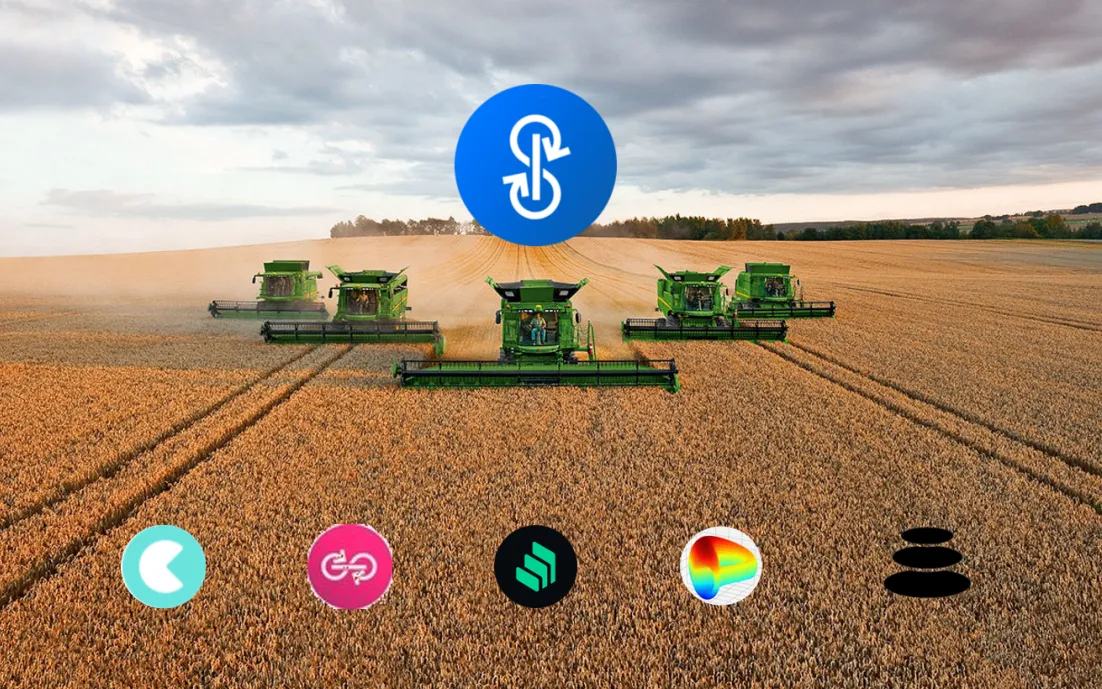 Yield Farming and Liquidity Mining: what's the difference? A simple guide to understanding two of the most interesting phenomena in the crypto world, Yield Farming, and Liquidity Mining.
Yield Farming and Liquidity Mining: what's the difference? A simple guide to understanding two of the most interesting phenomena in the crypto world, Yield Farming, and Liquidity Mining.
What is the difference between both ?
For fans of the cryptocurrency and Blockchain world, 2021 is definitely the year of DeFi: Believe it or not, the offbeat numbers and interest around this topic have exploded in recent months.
According to some, the Challenge is nothing more than yet another bubble in a still-nascent world depopulated by FOMO, the promise of sky-high returns and the use of phantom governance tokens.
As analyzed in the previous articles, DeFi is undoubtedly a cauldron in which we find an infinity of strategies, terms and projects in the most diverse fields, from DEX to synthetic assets via the lending platform and the platform. asset management.
In this article, we try to clarify two terms that are too often confused and used in place of the other, namely Liquidity Mining and Yield Farming.
Liquidity Mining: earn tokens by giving liquidity
Liquidity Mining stems from two very important concepts in the world of cryptocurrencies, liquidity and mining.
By liquidity we mean the availability of coins / tokens on a given platform, which is essential for the creation, growth and expansion of DeFi markets.
By mining, on the other hand, we mean the PoW-based technique in which, by making computing power available, you receive new coins just created by the algorithm.
These two concepts, while distant from each other, can be brought together to create a process that has certainly helped some DeFi projects flourish.
Basically, a person who wants to do liquidity mining “loans” liquidity to a certain pool (mostly on Uniswap) and, depending on the time and amount of liquidity provided, receives new tokens that have just been created. Let's take an example to clarify possible doubts.
A new platform in the DeFi world has governance tokens (GOVs) that it wants to distribute. To do this, in his white paper or on his home page, he describes some Uniswap pools from which these GOVs can be received through liquidity mining.
The person interested in the project and the possibility of receiving these GOVs must give liquidity to one of the pools described above.
The user receives in exchange the LP (Liquidity Provider Token) which will be necessary for the final redemption.
As long as the user-supplied tokens remain in the pool, they earn both 0.3% swap and governance tokens which are “mined” with each block.
At the time of redemption, the user, by returning the LP, receives in exchange both the fees and the “farmed” GOVs.
This process, as you can easily guess, has created a real gold rush for DeFi users.
Also thanks to Yield Farming, the possibility of receiving “free” tokens by providing liquidity to a pool was an opportunity not to be missed. So what is Yield Farming and how does it use Liquidity Mining?
Yield Farming: Maximize Yield by Automatically Moving Funds
Yield Farming is a process which is positioned above simple liquidity mining and which takes advantage of its main characteristics to maximize user returns.
In essence, Yield Farming consists of moving its liquidity between the different DeFi platforms using various mechanisms such as Liquidity Mining, Fund Leverage and choice of risk.
The idea for Yield Farming was born with Compound, which on June 16 began distributing its governance tokens to its users.
By “loaning” and “buying” Stable coins, users accumulated COMPs which were then distributed. After this idea and the explosion in the value of the COMP token, every project in the DeFi world wanted to create their own token and distribute it to entice users to go to a certain platform.
Hence Liquidity Mining and Yield Farming at the same time: the movement of its stablecoins to maximize returns by earning governance tokens.
Very quickly, the annual returns promised by many of these platforms skyrocketed and finding the highest return for one person was nearly impossible.
Hence projects such as yearn.finance, ie platforms for automatic management of funds by choosing the risk to be used for Yield Farming.
